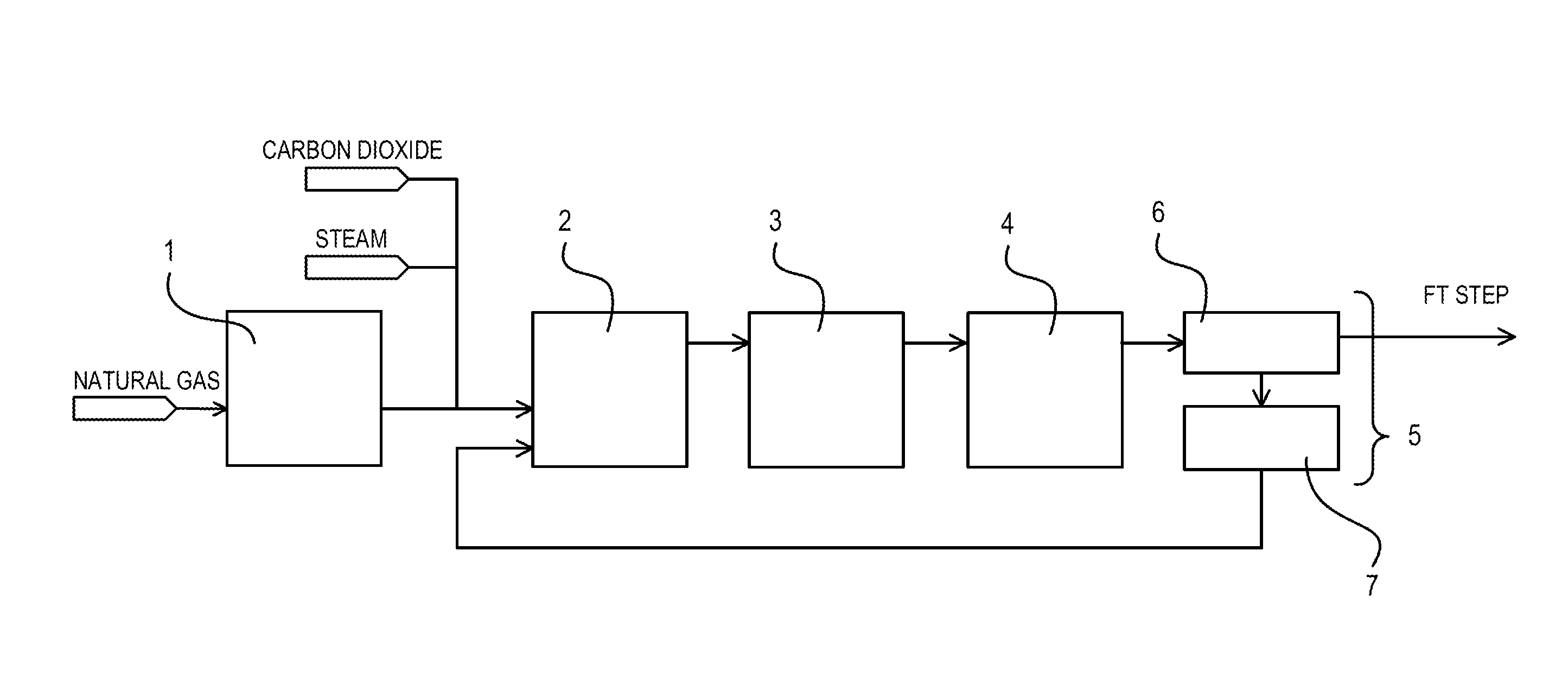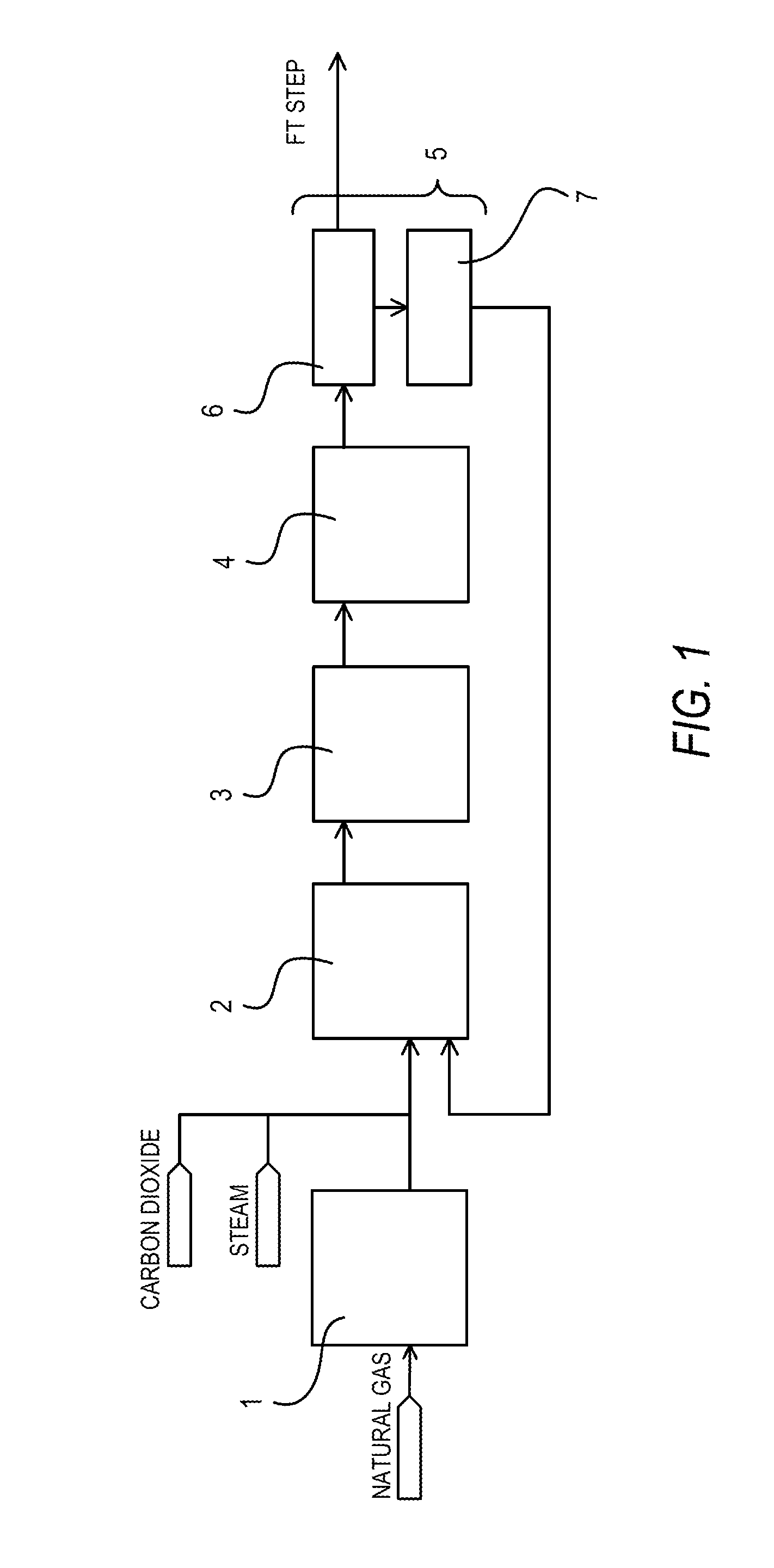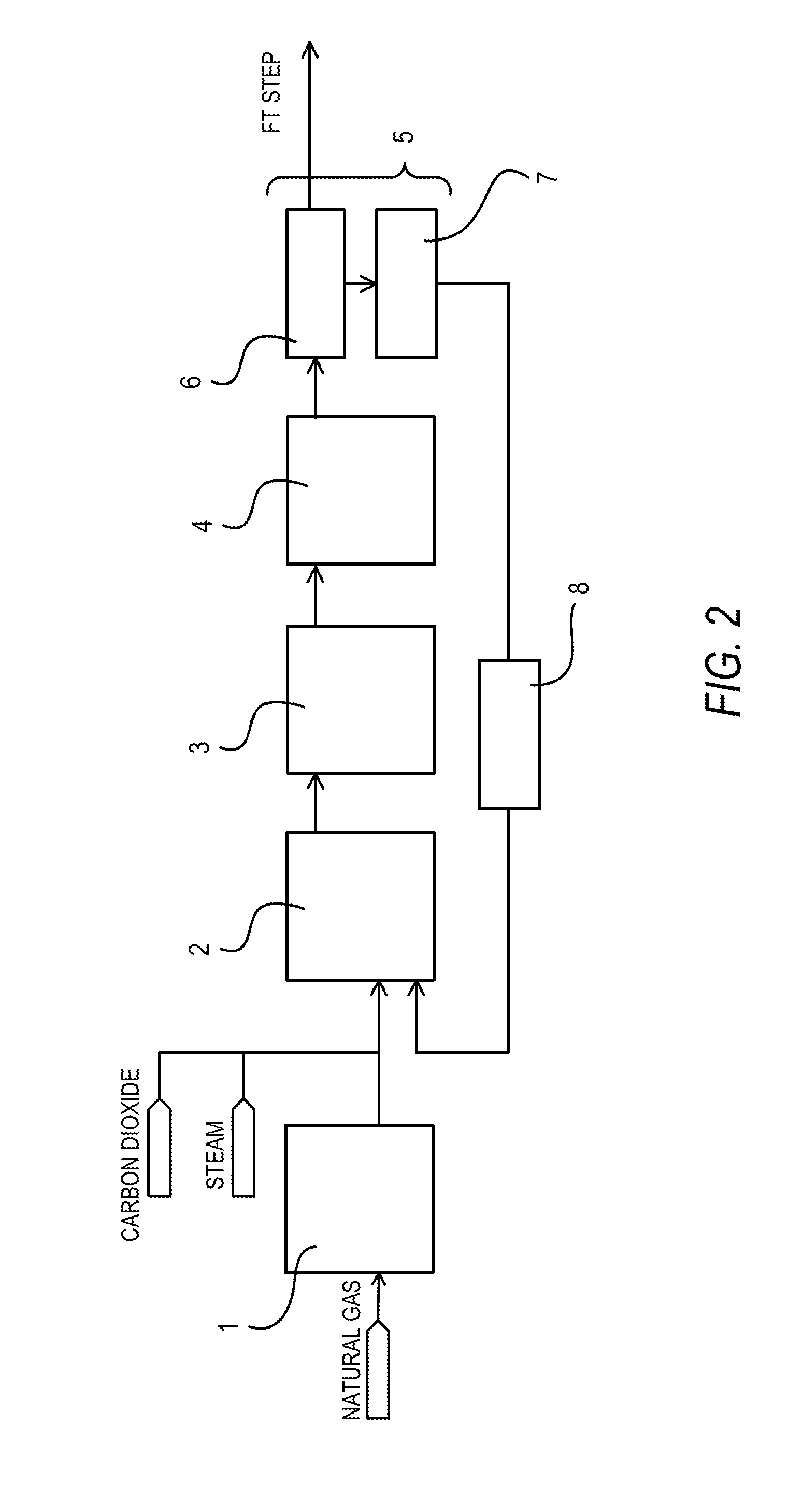Method of suppressing metal contamination of synthesis gas production apparatus
a technology of synthesis gas production apparatus and metal contamination, which is applied in the direction of combustible gas purification/modification, hydrogen separation using liquid contact, energy input, etc., can solve the problems of affecting the operation of the machine, affecting the efficiency of the machine, so as to prevent the catalyst activity and operate stably
- Summary
- Abstract
- Description
- Claims
- Application Information
AI Technical Summary
Benefits of technology
Problems solved by technology
Method used
Image
Examples
example 1
[0032]Synthesis gas was produced by introducing natural gas, to which steam and carbon dioxide were added to make the H2O / C mol ratio and the CO2 / C mol ratio respectively equal to 1.1 and 0.4, into a reformer filled with a reforming catalyst formed by supporting a VIII group metal on an alkaline-earth metal oxide carrier under conditions of an inlet temperature of 500° C., an outlet temperature of 880° C., a pressure of 2.0 MPaG, and a GHSV of 3,000 h−1. The obtained synthesis gas (H2: 58%, CO: 28%, CO2: 7%, CH4: 7%) was then introduced into a carbon dioxide absorption tower under conditions of a temperature of 40° C. and a pressure of 2 MPaG in order to separate and collect CO2 from the obtained synthesis gas. The carbon dioxide absorption tower 6 was of a filled tower type. In other words, it was filled with cascade mini-rings of SUS410, which is a stainless steel material containing no nickel. The introduced synthesis gas was brought into gas / liquid contact with an aqueous soluti...
example 2
[0034]The pressure of the carbon dioxide (the nickel carbonyl concentration was 2.0 ppmv in terms of nickel metal) collected in Comparative Example 1 was raised to 2.2 MPaG and subsequently the carbon dioxide was heated to 250° C. The heated carbon dioxide was made to pass through an adsorption apparatus filled with a nickel carbonyl adsorbing material (Actisorb400: tradename, available from Süd-Chemie Catalysts) at a GHSV of 1,500 h−1. As a result, the nickel carbonyl concentration in the carbon dioxide was reduced to 0.02 ppmv in terms of nickel metal.
[0035]This application claims the benefit of Japanese Patent Application No. 2011-078808, filed Mar. 31, 2011, which is hereby incorporated by reference herein in its entirety.
PUM
| Property | Measurement | Unit |
|---|---|---|
| concentration | aaaaa | aaaaa |
| catalyst activity | aaaaa | aaaaa |
| adhesion | aaaaa | aaaaa |
Abstract
Description
Claims
Application Information
 Login to View More
Login to View More - R&D
- Intellectual Property
- Life Sciences
- Materials
- Tech Scout
- Unparalleled Data Quality
- Higher Quality Content
- 60% Fewer Hallucinations
Browse by: Latest US Patents, China's latest patents, Technical Efficacy Thesaurus, Application Domain, Technology Topic, Popular Technical Reports.
© 2025 PatSnap. All rights reserved.Legal|Privacy policy|Modern Slavery Act Transparency Statement|Sitemap|About US| Contact US: help@patsnap.com



